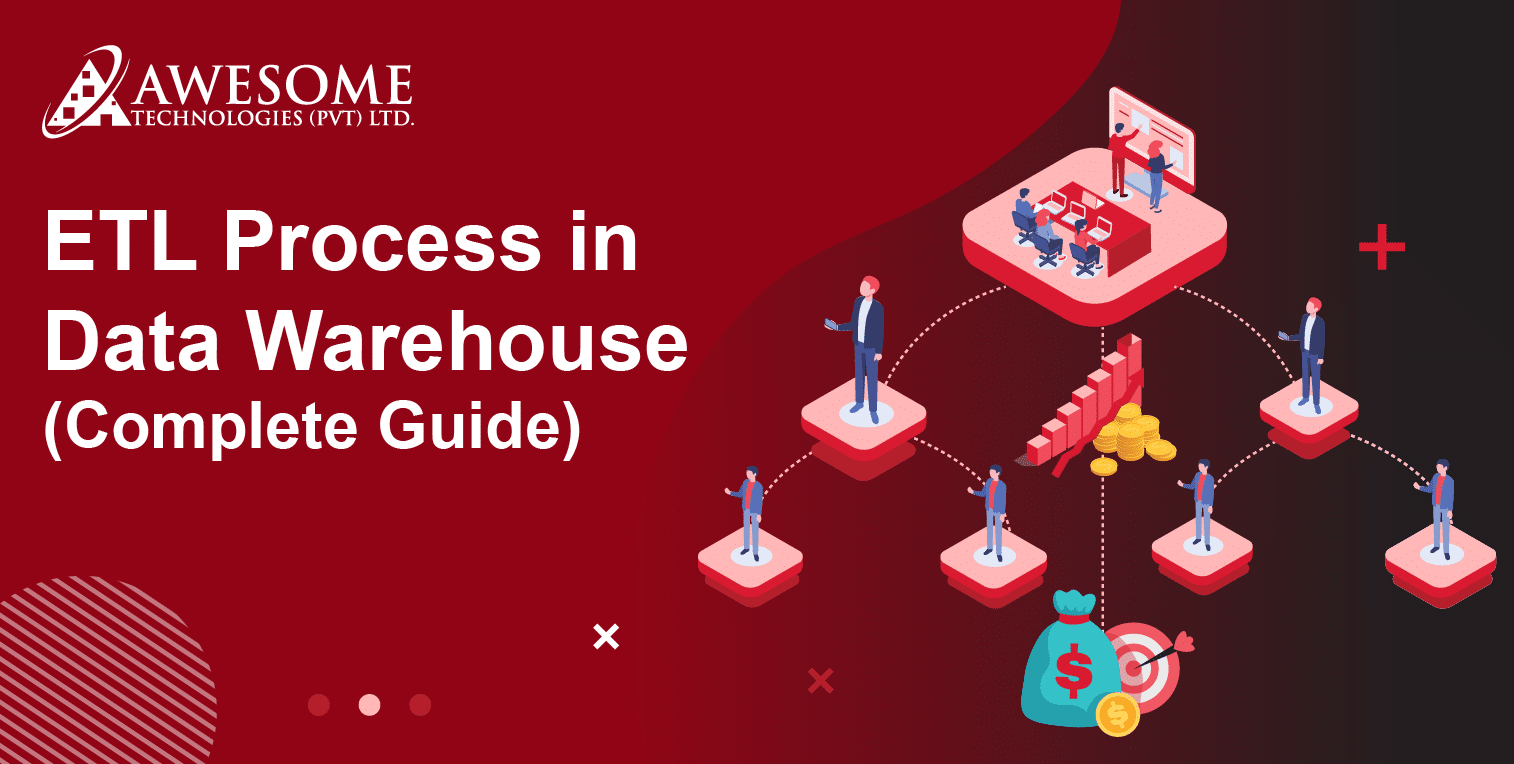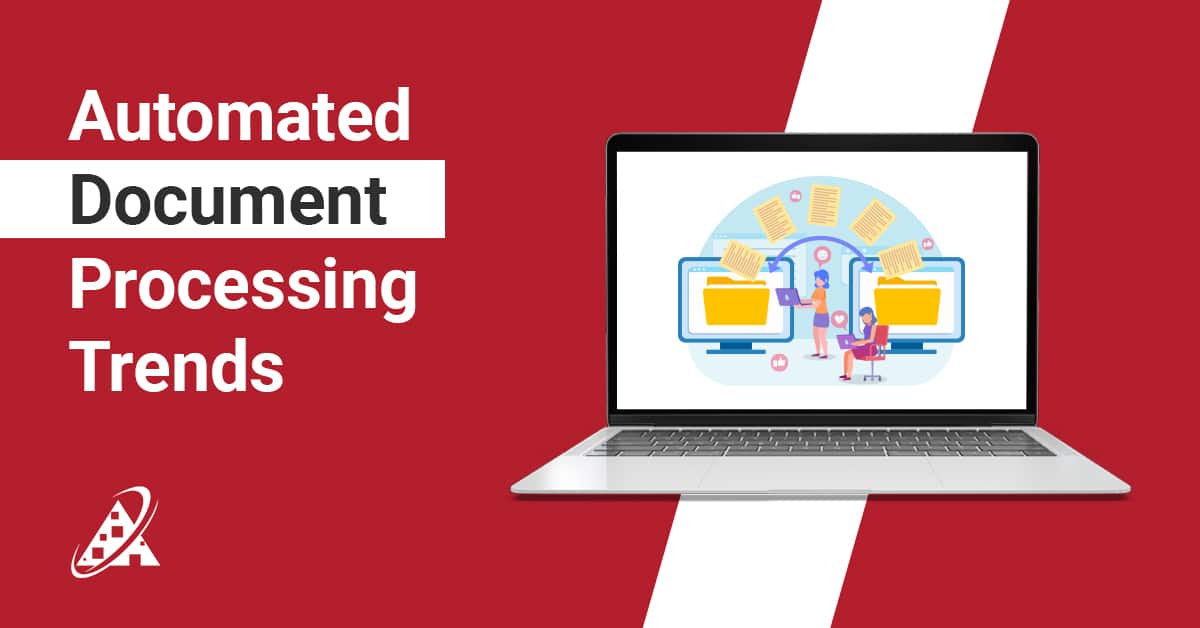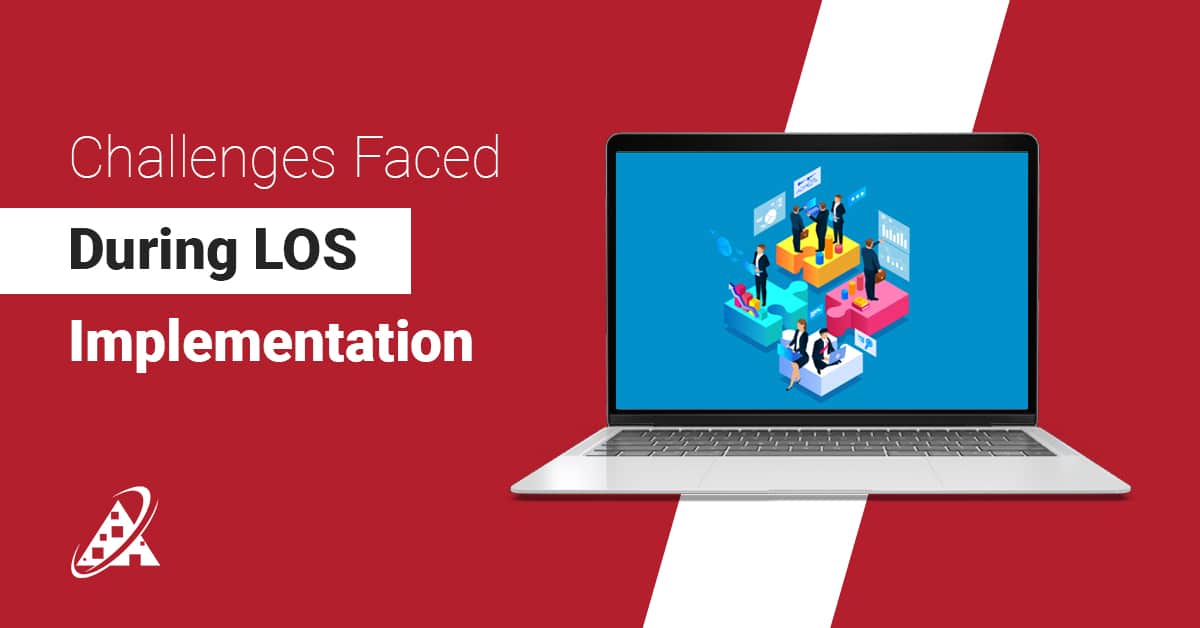The data-centric world of today demands that organizations focus on data. From this concept, the worth of the ETL process in data warehouse is second to none. Successful extraction, conversion, and loading into a central data warehouse is vital. Is your organization following the same data trend? If not, then know that the ETL process guarantees that your business works intelligently. Indeed, the endeavors are solid and offer practical insights!
In this blog, we will thoroughly assess the ETL process design in detail and how it works. Understanding ETL is important to optimizing the value of your data. Whether you are an executive or a data expert, your sound understanding is a must. So, let’s get started and unlock the full potential of your data warehouse in a contemporary style!
Data Warehouse
An ETL data warehouse is an enterprise system. It explores and reports on structured and semi-structured data from many sources. Businesses often get data from CRM, marketing automation, and POS activities. For this reason, a data warehouse is important in customized reporting and ad hoc analysis. To improve business intelligence and related functionalities, a data warehouse is a central hub! It carries old and recent data in one place. Moreover, the best feature is that it can give a long-term picture of data across time.
What is ETL?
ETL stands for extract, transformation, and load. It has a data store that contains data coming in from multiple sources. A data store can transform all types of data into a single and consistent unit and then add it to the data warehouse system. This feature allows organizations to lay their foundation on ML and data analytics. A key part of an organization’s data strategy is useful ETL integration. Companies can use data warehousing ETL to extract data from old systems. Moreover, data can be cleaned and organized to improve data quality. Also, ETL promises data stability across the organization.
Why Does ETL Matter In A Data Warehouse?
Is your organization also facing a data overflow and needing an efficient data warehousing mechanism? Undoubtedly, companies now need an excellent ETL tool for data warehousing. Extract transform load in data warehouse is vital because it allows you to clarify natural data from various sources. Imagine you have various data sources, such as financial records, customer data from CRM, or sales data from an e-commerce platform. This information is commonly shown in a variety of ways. Does this situation sound relevant to you? The main reason that ETL is useful is because it extracts and converts this diverse data into a stable structure. ETL processing acts as a strong process between your operating systems and data warehouse. It makes sure that it has trustworthy and apt information.
Steps Involved in the ETL Data Warehouse Process
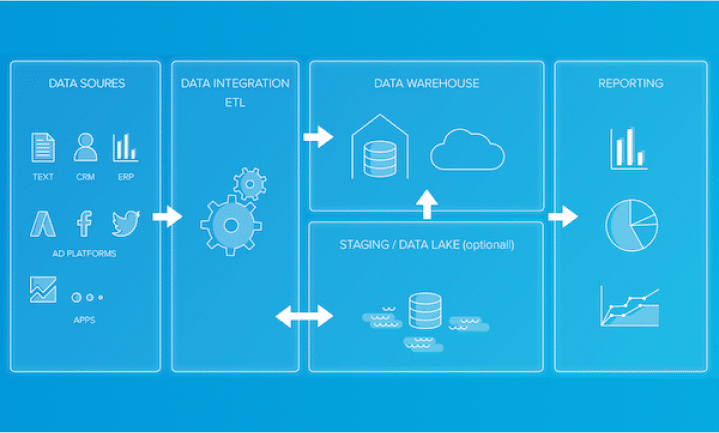
ETL has three steps: data loading, transformation, and extraction. Contemporary firms find it useful to follow these steps for efficient data warehousing.
Data Warehousing Data Extraction
Extraction is the initial stage of the ETL process design. It involves obtaining data from many sources. The goal is to protect the operational capacities of your source systems. Databases, cloud services, flat files, APIs, and Internet of Things devices can all provide you with data. When extracting data, caution should be taken. Companies utilize smart techniques like incremental extraction. This approach helps companies to extract fresh or updated data only. Further, this updated data helps to reduce load and network use. A quick precaution is vital if you are working with large volumes of data in ETL processing.
Transforming Data For Warehousing
After the extraction phase, the data passes through the transformation process. Data is organized, cleaned, and added to satisfy data warehouse needs. In this step, there are several phases explained below:
Data Purification:
Delete copies, fix mistakes, and eliminate duplicates.
Integration of Data:
Integrating information from many sources to produce a rational viewpoint.
Aggregation of Data:
Summarizing data to make analysis easier.
Converting Data:
Converting dates or standardizing units are two examples of data format changes that create consistency.
Filling A Data Warehouse With Information
The last step is to fill in a ETL data warehouse with information. At this stage, the data warehouse has structured and clean data. There are various ways to complete the loading process:
Complete Load:
It is common practice to load all the data simultaneously during the initial load.
Gradual Load:
Regular updates are faster and more efficient when loading new or updated data.
Loading In Batches:
At preset times, data is loaded in sets.
Instantaneous Load:
It is perfect for real-time analysis because data is added as soon as it becomes accessible.
Advantages Of The Data Warehousing ETL
- The data warehouse data is accurate, safe, present-day, and thorough.
- The ETL processing can improve usability and accessibility when data is taken from multiple sources.
- Data is safe in a data warehouse because not everyone can access it. Only authorized personnel have permission to access it.
Vital Components of ETL
There are three main parts to the ETL process in data warehouse which can be useful to your business:
Extraction of Data:
Data extraction means discovering apt data sources and obtaining raw data. However, the kind of data source and the extraction techniques impact the process. Finding pertinent data sources and obtaining raw data is known as data extraction. The kind of data source and the extraction techniques employed affect the procedure. Some methods are database hunts, API challenges, file transfers, and CDC.
Transformation Of Data:
Data transformation involves changing the extracted data into a layout that the data warehouse can use. However, good-quality data is always needed. Hence, it is vital to clean and evaluate it. The various types of data need to be normalized and increased. This data is exactly business rules, calculations, and conversions. This stage could also include techniques like totaling, synopsis, and restoration.
Loading Data:
Storing changed data in the data warehouse is known as data loading. In this step, the experts create suitable data formations, plan the changed data according to the warehouse outline, and import it. Moreover, it also includes bulk loading. Businesses need to be aware of referential honor execution, data reliability checks, and error-handling methods. All three practices in ETL process design need to be used fully.
Approaches That Guarantee The Success Of the ETL Process
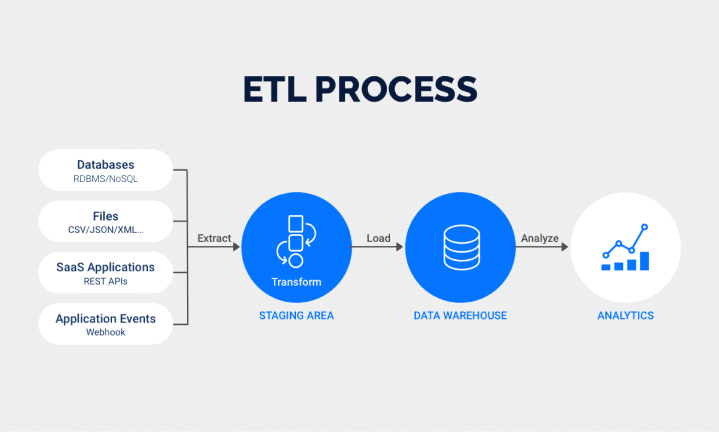
The following approaches promise the success of the ETL process. Let’s explore them.
Quality Assurance And Data Profiling:
Data profiling eases the composition, quality upkeep, and organization of source data. However, organizations may face data problems, which can cause issues with quality guarantees. Hence, a sound approach is necessary to ensure the success of the ETL processing.
Optimizing Performance And Scalability:
Every business that deals with data needs to optimize performance and scalability. A scalable ETL process design will help easily handle greater data volumes in the event of changing business needs. Moreover, load balancing, splitting up, and parallel handling are strategies that improve performance.
Handling Errors and Auditing:
It is necessary to handle errors and do auditing during the ETL process in data warehouse. The experts capture and handle errors using strong processes. Undoubtedly, you can keep an eye on performance and manage data lineage. Moreover, auditing also promises to be done by monitoring ETL processes.
Are you ready to manage your data sources in a unified data warehouse? Awesome Technologies Inc. can help you with what you are looking for!
ETL Difficulties And Upcoming Patterns
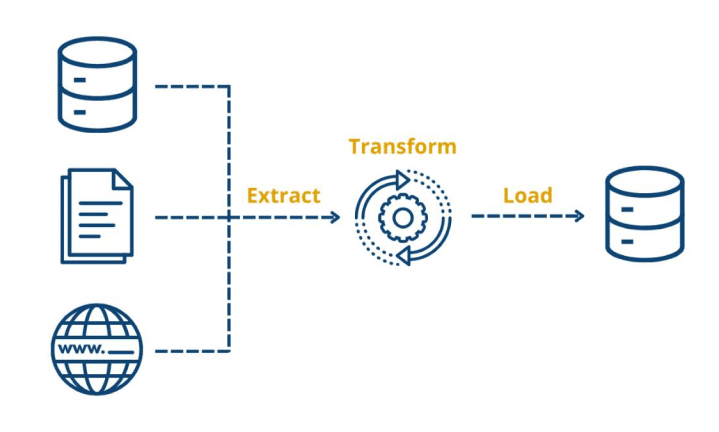
Intricate Data Transformations:
It can be challenging for a business to manage intricate data conversions. This becomes more challenging when dealing with many data sources, a variety of data formats, and changing data architecture. Hence, there is a dire need to plan the data warehouse and source systems carefully.
Problems With Data Quality And Inconsistency:
Maintaining data quality and reliability during the process is vital. To avoid data inconsistencies, it is important to cleanse and validate data. Many businesses employ sophisticated data profiling, too. There is a chance of missing information or a need to resolve data quality issues. Hence, ETL and data warehousing need not be subject to such inconsistencies.
ETL Data Warehouse Applications
ETL is vital to load data from one system to another at any time. Businesses are moving forward with the ETL data warehouse applications for greater practicality:
- Data mapping between the source and target systems requires an ETL process, which becomes crucial after the mapping is completed.
- An ETL process is needed to extract data from various data sources, transform it, and load it into business intelligence tools. Hence, the business can swiftly analyze and report data.
- Thanks to the ETL process design, migrating data from legacy systems to modern data warehouses became easy.
How To Select The Right Etl Tool?
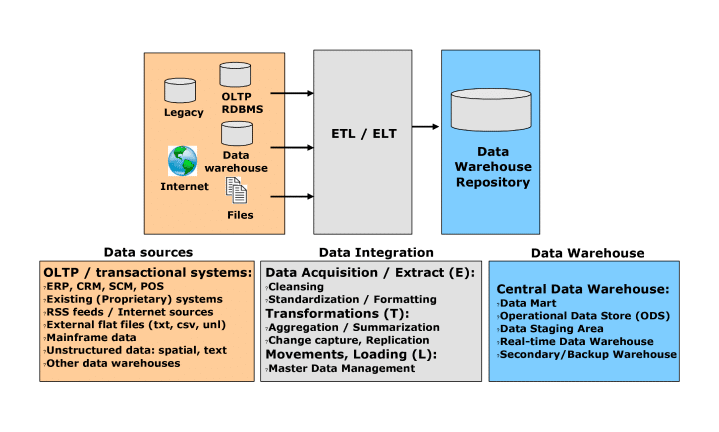
A company’s capacity to integrate data and perform the analysis highly depends on selecting an ETL tool. The following steps will help you choose the best ETL tool:
Specify What You Need
Start by evidently defining the data warehousing ETL needs of your company.
Analyze The Forms And Sources Of Data
Investigate the sources of your data. The best ETL tools in data warehouse should be able to open and consume data from various sources. The most common sources are files, databases, cloud platforms, and web portals. The tool your business should support the relevant data formats.
Evaluate Your Capabilities for Data Transformation
It is vital to consider how much data transformation is essential for business operations. Many ETL products include important transformation features. To ensure the reliability of transformed data, look at Awesome Technologies Inc.’s tool’s support for data quality, data cleansing, and error management.
Performance and Scalability
Analyze the tool’s performance and scalability for data warehousing ETL. It should be able to scale as the amount of data increases. It should also be able to manage your present data volumes. The business needs to scale features such as in-memory processing, distributed handling, and parallel handling.
Simple To Use And Intuitive
The ETL tools in data warehouse should be simple to use. It should match the skills and capacities of your workers. You might need to assess how easy it is and if the workers need training. Moreover, it should also support creating ETL without any coding. The advantage is that costs can be saved if there is a no-code strategy. You might think of hiring technical staff who can manage and maintain ETL pipelines, but it could be another cost! So, the more convenient the ETL tool, the easier it is for a regular worker.
Combining Current Systems
It is important to ensure that the ETL processing solution easily integrates with the present systems. If the technology stack is not compatible, the data ecosystem might encounter issues. Instead of working with many providers, many firms choose a solution that provides a single, end-to-end data environment.
The Top ETL Tools
Switch from Awesome Technologies Inc.
Switch offers businesses end-to-end tools and solutions to optimize ETL and ELT processes. The company follows a consistent and no-code platform for ETL process in data warehouse. ETL solution, Switch, helps businesses to create automated data pipelines. Using its simple and user-friendly interface, these are vital link data from multiple sources. Switch provides unique things beyond data extraction, transformation, and loading. It includes data extraction integration, EDI, API management, and data warehousing. All these features come in handy with ATI’s data ecosystem.
Azure Data Factory
Azure Data Factory utilizes Microsoft’s cloud-based solution. It is essential for creating and controlling cloud data flows. Both mechanized and UI-based methods of data warehousing ETL are braced!
Data Integrator for Oracle
Oracle’s solution for all data integration processes, including ETL, is called Oracle Data Integrator (ODI). It works well with Oracle Enterprise Manager and Oracle Warehouse Builder (OWB) and can cover an extensive range of integration requirements.
To Sum Up
Unlike in the past, ETL and data warehouse took a grip on the digital landscape. Many companies now realize that these are the essential elements of data-based decisions. In the present era, data integration requires the support of ETL. Businesses are incorporating relevant modern technologies. These technologies are vital for automation, scalability, and security. When modern-day technologies combine with recent data warehouses, businesses can gain benefits. To do intelligent analysis, businesses need to first work on clean data.
ATI is a code-free, enterprise-level data management system for ETL process design. The tools it utilizes for ETL work on powerful ETL/ELT principles. With our zero-code solution, users can extract, alter, and load data to their searched-for location without writing any code. Our ETL tool has a broad hub of connectors, transformations, and innate features. Up to 80% of the time spent operating ETL processes can be saved using our tool’s automation and planning features.
Are you curious how Awesome Technologies Inc. suits your unique ETL needs? Try it out by obtaining access to a complimentary 7-day trial edition!

